Companion planting simply means that some plants can, and should, be planted together to create a beautiful and healthy garden. When choosing companion plants for your roses, opt for ones that have the same sun and water requirements first, and then choose for beauty.
I've compiled some classic pairings for you as well as some unusual ones that you may not have considered. USDA hardiness zones are given for each, but simply look for a similar substitution if one of these falls outside your particular zone.
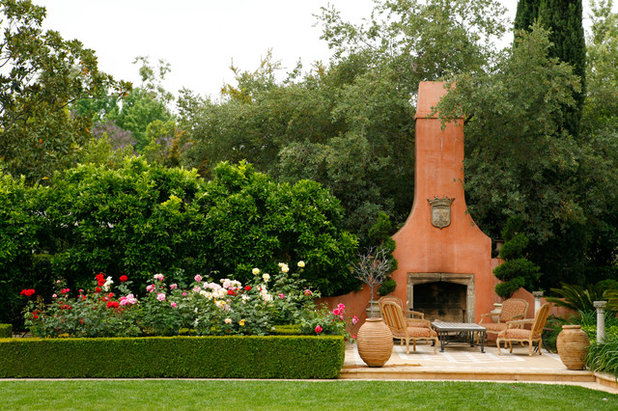
EPT DESIGN
1. Shrubs and evergreens. Shrubs, trees and evergreens provide structure in the garden, so that there is something to look at during the cooler months, when flowers are not as plentiful.
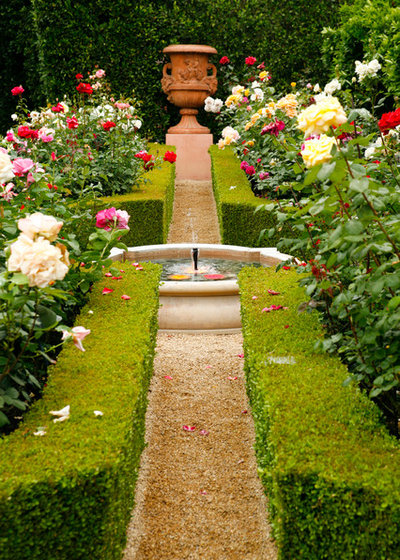
EPT DESIGN
You can choose shrubs that have a more shorn and formal hedge appeal, such as boxwood (
Buxus spp, zones 5 to 9) and holly (
Ilex spp, zones 4 to 9), or loosen up a bit with
abelia (
Abelia spp, zones 6 to 9),
viburnum (
Viburnum spp, zones 2 to 8) and
nandina (
Nandina spp, zones 6 to 11).
Shrubs with the same leaf size and color will appear more formal, while a variety of shrub and foliage sizes and colors will read as more informal and looser.
Shown: Japanese
boxwood
(Buxus microphylla japonica)
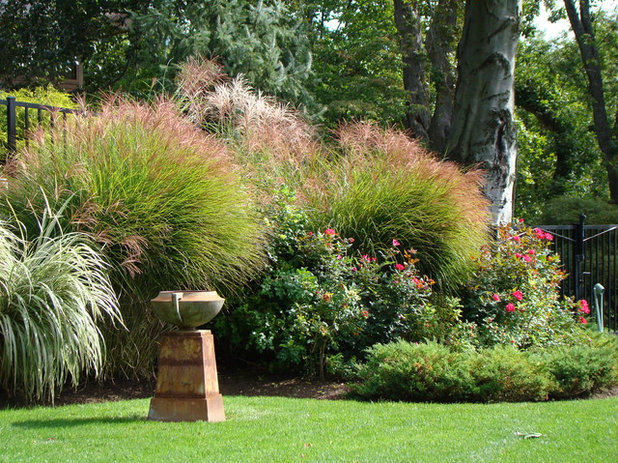
Johnsen Landscapes & Pools
2. Ornamental grasses. This is a more unexpected pairing, but one that really works. The smaller leaves of roses and the pop of their color are striking against the softer, more free-form appearance of ornamental grasses.
Try some larger grasses, like this
maiden grass (
Miscanthus sinensis, zones 5 to 9) or
switchgrass (
Panicum virgatum, zones 5 to 9),
or smaller ones, like
Mexican feathergrass (Stipa tenuissima, zones 7 to 10
),
blue fescue (Festuca glauca, zones 4 to 11
) and
sedges (
Carex spp, zones 4 to 9).
Note: Some grasses, like Mexican feathergrass, can be invasive in parts of the U.S. Be sure your plant choices are appropriate and recommended for your area.
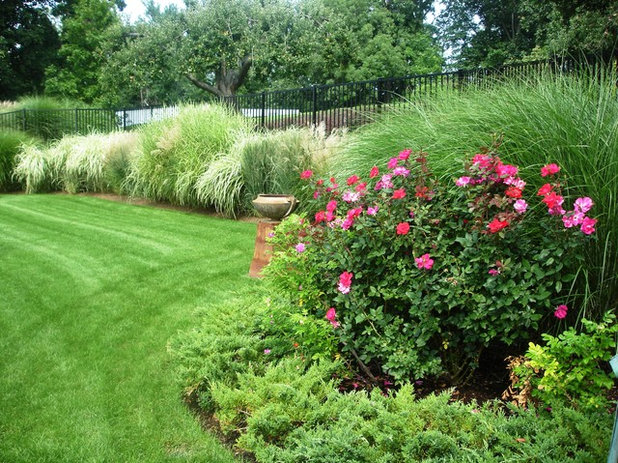 Shown:
Shown: Maiden grass (
Miscanthus sinensis 'Gracillimus')
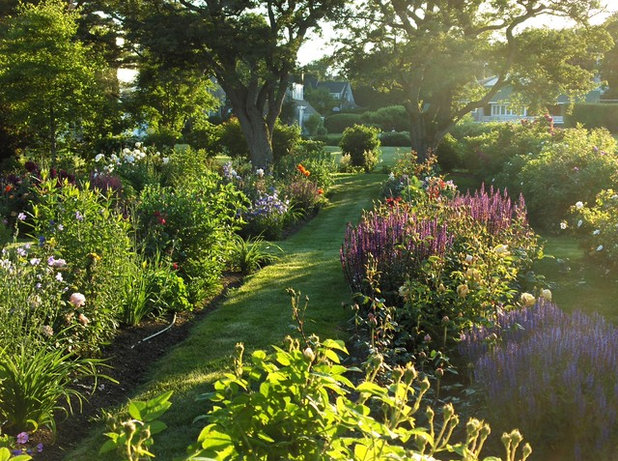
Ann Kearsley Design
3. Flowering perennials. An almost unlimited number of flowering perennials pair well with roses. You'll want to choose other flowers that complement, rather than compete with, your roses, so look for perennials with smaller or larger forms, different leaf types and a variety of flower colors and shapes.
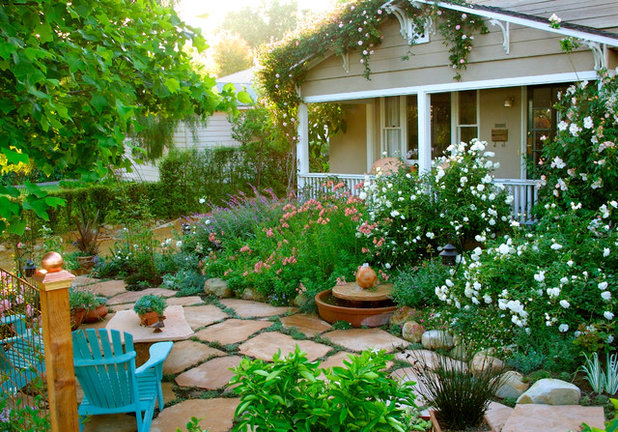
Margie Grace - Grace Design Associates
Good options are
daylily (
Hemerocallis spp, zones 3 to 9),
verbena (
Verbena spp, zones 5 to 10),
bellflower (
Campanula spp, zones 5 to 8),
delphinium (
Delphinium spp, zones 3 to 7), iris (
Iris spp, zones 3 to 9) and
salvia (
Salvia spp, zones 4 to 11).
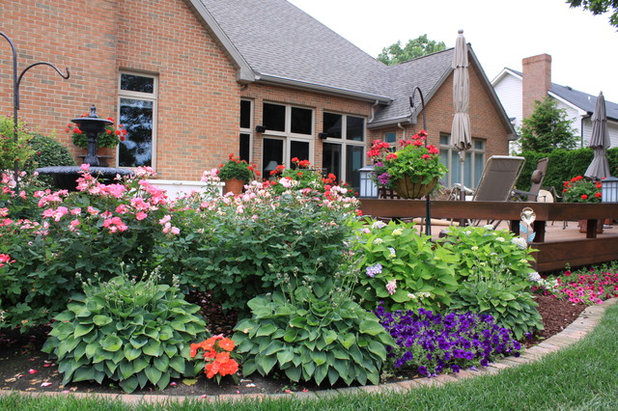
Arcadia Gardens, LLC
4. Foliage plants. Now don't get me wrong; many foliage plants can also have flowers. The flowers might be dramatic, charming or insignificant, but with these types of plants, it's the foliage that really shines.
Look for options like
hostas (
Hosta spp, zones 3 to 9),
heuchera (
Heuchera spp, zones 4 to 9),
lamb's ears (
Stachys byzantina, zones 4 to 9),
Persian shield (
Strobilanthes dyerianus, zones 9 to 11) and
coleus (
Solenostemon spp, zones 10 to 11). Their stunning leaf shapes, colors and sizes play off the more recognizable form of roses.
Shown: Hosta spp and
hydrangeas
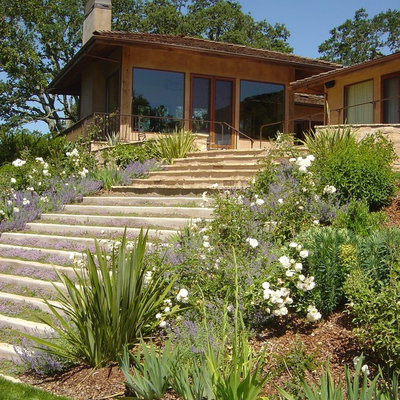
Elements Landscape Inc
Shown: Catmint and New Zealand flax
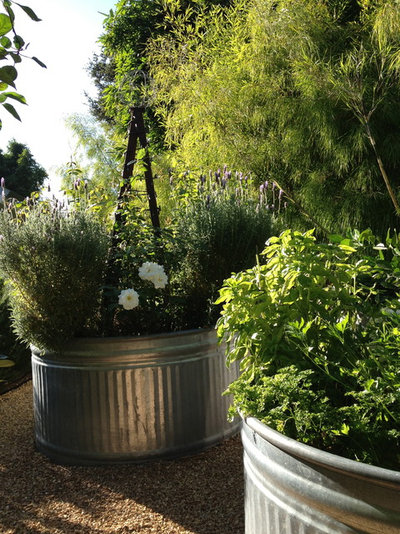
edb designs
5. Herbs. I love the combination of edible herbs and roses, and when the herbs are beautiful as well, it's a great pairing just waiting to happen.
Shown: Lavender and
basil
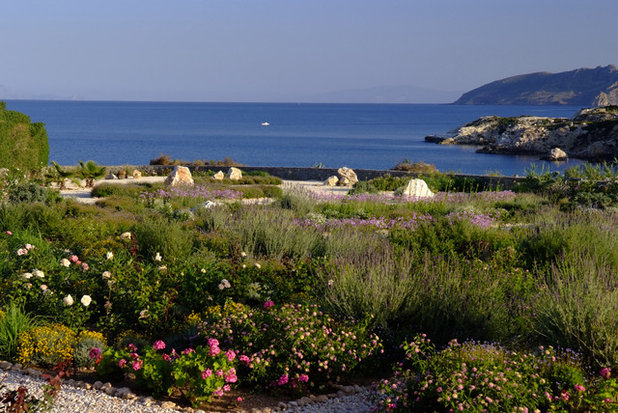
Carolyn Chadwick
Nearly any herb will do as long as the sun and water requirements are similar, but my favorites are lavender (
Lavandula spp, zones 5 to 10),
yarrow (
Achillea millefolium, zones 3 to 10),
rue (
Ruta graveolens, zones 6 to 11),
feverfew (
Tanacetum parthenium, zones 4 to 9),
catmint (
Nepeta spp
, zones 4 to 8),
parsley (
Petroselinum crispum, zones 5 to 8) and
thyme (
Thymus vulgaris, zones 4 to 9).
Shown: Lavender and
society garlic
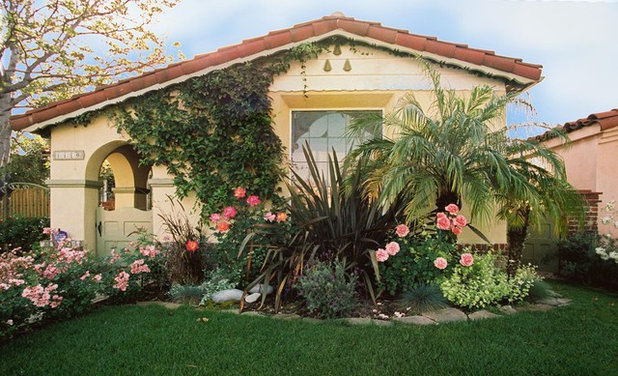
Urban Oasis
6. Architectural plants. These types of plants have very distinct, strong forms — the perfect foil for classic and exuberant roses.
Shown: New Zealand flax and
pygmy date palm
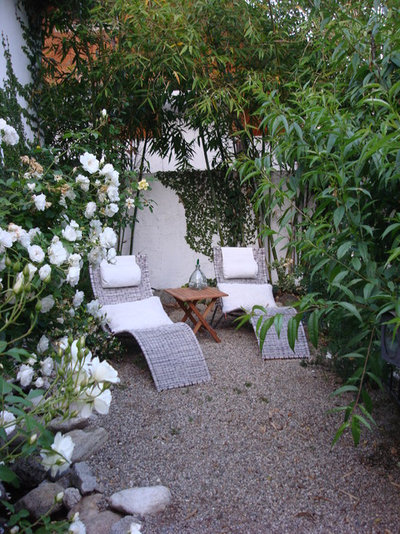
Crazy but incredible options include
bamboo (
Bambusa spp, zones 5 to 11),
palms (
Arecaceae spp, zones 1 to 11),
agaves (
Agave spp, zones 5 to 11),
yuccas (
Yucca spp, zones 4 to 11) and large, strappy perennials, like New Zealand flax (
Phormium spp, zones 7 to 11).
When combining roses with more drought-tolerant choices, such as agaves and yuccas, be sure that both types of plants can exist with the same amount of water. Some roses, like Knock Out roses, are more drought tolerant than you might think, leading to a perfect plant marriage.
Note: When pairing roses with bamboo, be sure to choose the clumping bamboo varieties rather than the runners, or you'll have an invasive mess on your hands.
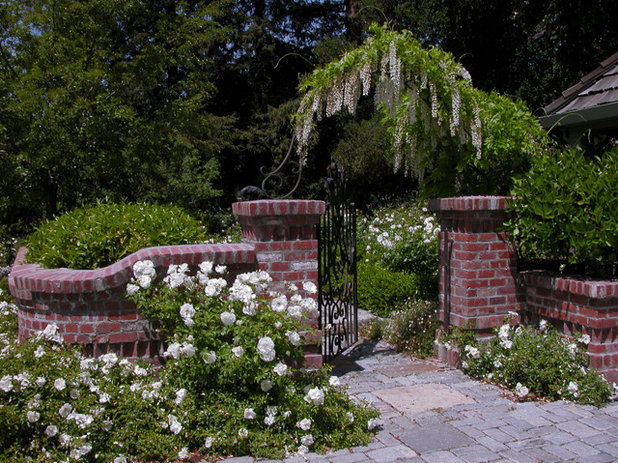
Design Focus International
7. Vines and ground covers. If you're using a wide variety of shrub roses that grow from 2 to 6 feet tall or taller, then your eye will naturally gravitate toward the midrange in your garden. And if you allow your eye to stop there, you're missing out on a lot of planting opportunities.
Flowering vines that soar overhead and ground covers that creep around the rose's base are the perfect bookends to your shrub roses' form.
Vines to consider are
passion vine (
Passiflora spp, zones 6 to 10),
moonflower (
Ipomoea alba, zones 9 to 11),
sweet pea (
Lathyrus latifolius, zones 6 to 9),
clematis (
Clematis spp, zones 4 to 11), wisteria (
Wisteria spp, zones 3 to 8) and
jasmine (
Jasminum spp, zones 6 to 10).
Shown: Chinese wisteria (
Wisteria sinensis 'Alba')
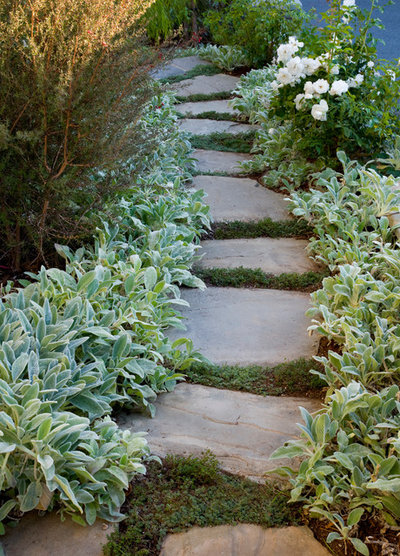
Stout Design-Build
Great ground covers include
lamb's ears (
Stachys byzantina, zones 4 to 9),
verbena (
Verbena spp) and
woolly thyme (T
hymus pseudolanuginosus, zones 4 to 8)
. Shown: Lamb's ears





